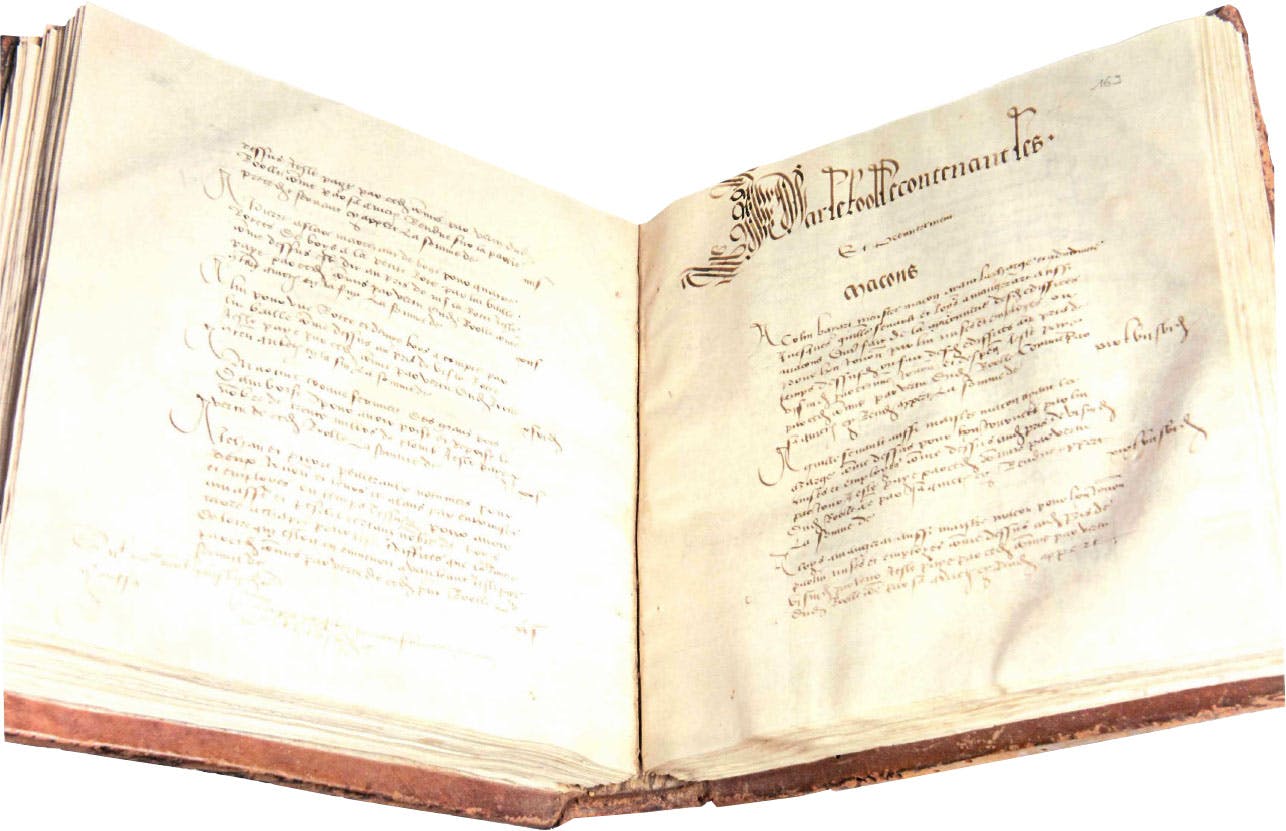
April 14, 2016
Philanthropy in action at AXA
AXA is helping to acquire the Register of accounts of the Château d’Amboise. Designated a national treasure
by Fleur Pellerin, French Minister of Culture and Communications, in June 2015, this historical manuscript will be purchased and restored for the National Archives of France. Delve into an estate that marked the history of France.
national treasureby Fleur Pellerin, French Minister of Culture and Communications, in June 2015, this historical manuscript will be purchased and restored for the National Archives of France. Delve into an estate that marked the history of France.
3 minutes
A treasure to be safeguarded
Partially destroyed after the French Revolution and under the Napoleonic Empire, the Château d’Amboise is an invaluable piece of French heritage. Its Register of accounts is the only handwritten vestige of the initial works commissioned by Charles VIII between October 1495 and September 1496. Three hundred sheets of parchment paper offer a full balance sheet of income and expenditure attributed by the King to the construction of the château, organized by crafts.
The Register of accounts of the Château d’Amboise is therefore an important historic document in many ways. Not only is it an exceptional object to be restored and preserved under optimal conditions, it bears fundamental historical testimony to the nature and cost of the materials used to build and decorate the château, providing the names and duties of the 700 craftsmen who helped to build this masterpiece of the French Renaissance. It also shows the economic toll of its construction on the Kingdom’s finances.


AXA is contributing €90,000 to help acquire this treasure, which will join the National Archives of France and benefit from the best restoration techniques available. All the restoration will be funded through a public fundraising campaign launched by the Service Interministériel des Archives de France (French Archives Administration) and the Société des Amis des Archives de France (Friend’s Society of the French Archives), via the Fondation du Patrimoine (Heritage Foundation). We are proud to be participating in this philanthropic project. It is an integral part of our commitment to preserving and promoting cultural heritage and a natural extension of our role as an insurer.

Amboise’s remarkable past
Inhabited since Antiquity, Amboise played an important role in the history of France. In 503, it was the site of the historic meeting between Clovis, King of the Franks, and Alaric, King of the Visigoths. 500 years later, the medieval fortress of Amboise was thought to be the best-protected site in all of western France. In 1431, the Château’s owner, Louis d’Amboise, was sentenced to death for plotting against the favorite of King Charles VII. Although Louis d’Amboise was later pardoned, his château was nevertheless seized by the King.
The medieval fortress was extensively rebuilt and improved following the 1483 coronation of King Charles VIII, known as the great builder
of Amboise. His aim was to transform it into a sprawling gothic palace featuring two outstanding knights’ towers. Unfortunately, Charles VIII didn’t live to see his project completed; he died in 1498 after striking his head on the lintel of one of his castle’s doors.

Charles VIII had begun the most august and magnificent building that any prince had undertaken for one hundred years before, both in the town and the castle; and this appears by the towers, to the top of which one may ride on horseback. […] for he collected whatever was commended to him either in France, Italy or Flanders.
Philippe de Commynes, Mémoires.
The successors of Charles VIII, who included Louis XII, François I and Henri II, continued his work to turn Amboise into a bona fide Renaissance palace – a royal residence forming the hub of the kingdom’s political, economic and artistic life. Famous artists and poets also marked the castle’s history, such as Leonardo da Vinci, who was buried there in 1519, and Jean de la Fontaine, who sojourned there in 1663.



